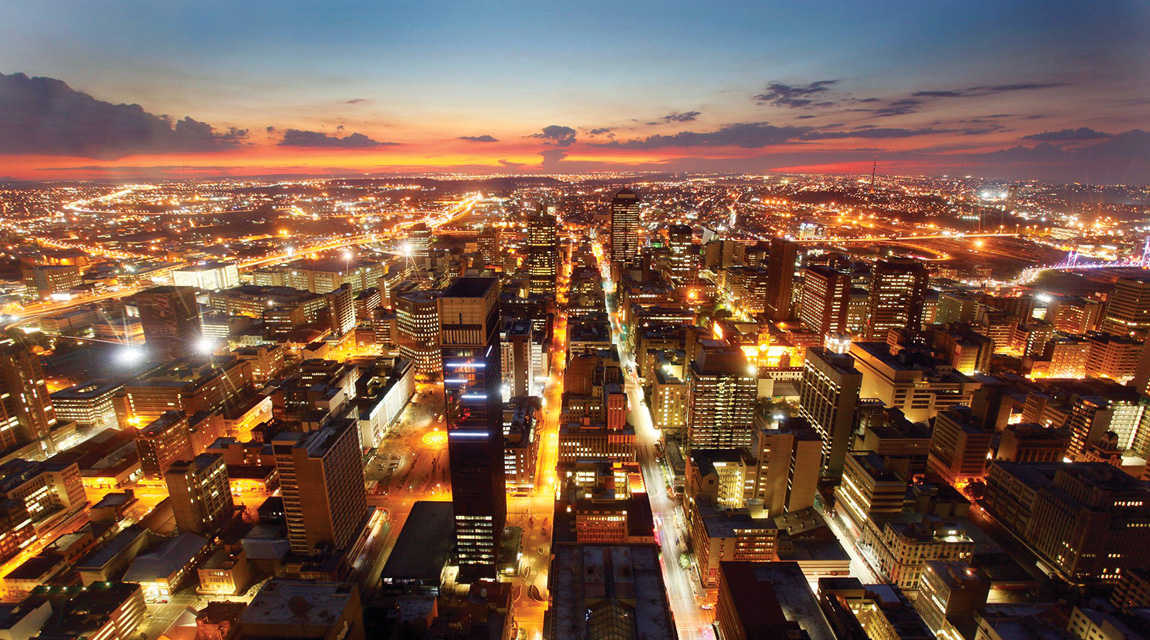Can SA finally address its transport challenges?

More than 630 delegates descended on the council for Scientific and Industrial Research (CSIR) International Convention Centre during July for the 37th annual Southern African Transport Conference. GAVIN MYERS was one of them
Choosing between the dozens of sessions that were offered during the four-day conference was a tough task. Academics and industry thought leaders from all sectors related to transport provided delegates with much food for thought.
The conference kicked off with a welcome by Kenny Kistan, chairman of the ATC board, who noted that most of the Brics (Brazil, Russia, India, China and South Africa) countries are moving at a rapid rate to address issues in their transport systems. South Africa, meanwhile, has a lot of catching up to do…
“South Africa is nearing the end of the Decade of Action for Road Safety, but progress has not happened at the required rate. Protesting and vandalism [of transport assets] seem to have no consequences for perpetrators; government needs to treat this as economic sabotage.
“Parliament has approved the National Land Transport Bill, but South Africa should be preparing for a new wave of transport solutions,” he commented.
Kistan was followed by the Deputy Minister of Transport, Sindisiwe Chikunga. In touching on rail, aviation, maritime and road transport, she noted that transport challenges are impacting on Africa’s capacity to grow.
“Africa is plagued by the poor quality of roads, weak maintenance, missing links, deteriorating infrastructure, and poor transport planning and engineering in cities with increasing traffic. Funding is another challenge, as is coping with the influx of rural-urban migration,” she noted.
“South Africa is now party to the Continental Free Trade Area agreement. This must drastically drop the cost of trade among African countries. The value of the agreement for South Africa, according to Rob Davies, Minister of Trade and Industry, is the development of regional value chains and the movement to higher, more complex levels of production.
“Africa has a young population and a growing workforce, which is an asset in an aging world that is becoming increasingly digital. How will the youth assist in addressing the continent’s issues? Skills are critical, but how will they be cultivated?” she questioned.
Skumbuzo Macozoma, CEO of the South African National Roads Agency Limited (Sanral), suggested we begin by asking what type of transport future we desire…
“It must offer equitable access; rapid mobility; integrated transport systems; paperless and cashless solutions; and be safe, sustainable and livable. The world is doing this; in South Africa we are still chatting about it. We need to begin to move quickly,” he urged.
Macozoma said that there are things South Africa is just not getting right.
“Infrastructure at the national level is generally good, but we’re struggling in poor regions. Integrated planning shows pockets of excellence, but we are not getting integrated public transport right; there are sector-based best practices, but not across modes and there is limited integration.
“We have many road-safety initiatives, but more than 1 000 people are still dying on our roads each month. Incident management is good, but there is an urban bias. Traffic management is good in all urban centres, but we still struggle with congestion … private trips are inefficient and public transport is mostly not viable, although services like Uber and Taxify are helping.
“And our toll technology is cutting edge – ignoring the politics,” he joked.
Macozoma suggested that to reach the required transport future, skills development must be at the top of the agenda, followed by using advanced and recycled materials, then applying technology, collaboration between associations and regulatory reforms.
“The public and private sectors are going to have no choice but to work together. We have the ingredients, so we must put them together,” he noted.
Revised white paper to drive future
Moeti Kgamanyane, director at the Department of Transport responsible for Transport Policy Monitoring and Evaluation, and currently the project manager for the review of the white paper on National Transport Policy of 1996, said that there are numerous areas in which we have not made progress – and others where more must be done – since the paper was created 22 years ago.
While the review process started four years ago, Kgamanyane commented that there were many processes the paper needed to undergo before it gets to gazetting and public consultation.
“The vision of 1996 is still relevant today, but we needed to reposition the role of government in achieving the goals. There are areas where we can have partnerships and joint ventures with businesses and stakeholders to improve the transport system in South Africa,” he began.
The paper has now been structured and flows according to transport modes and their policy objectives. “Public transport, for example, has its own chapter because it has its own unique challenges. If we can get public transport right, the rest will be easy,” commented Kgamanyane, illustrating the scale of the task.
Kgamanyane adds that the white paper will propose mitigating measures for addressing certain key issues above other challenges. “We have many challenges, but there are primary issues across all provinces and communities. Major concerns have been raised,” he said.
These key issues include inadequate investment in rail infrastructure (moving cargo to rail cannot happen without adequate investment); limited access to transport in rural areas and for people with disabilities; scarcity of the requisite skills; and limited enforcement.
Regarding roads, Kgamanyane noted: “The unacceptable traffic conditions on South African roads, and especially the high accident and casualty rates, continue. A stronger approach will be needed to effect a drastic improvement in the discipline of road users and the reduction of collisions. Roadside testing of the roadworthy compliance of vehicles will be increased. The development of safer road infrastructure for all users should be prioritised.
“Non-motorised transport (NMT) should be explicitly promoted developed and integrated into spatial development strategies. Adequate and sustainable funding for its promotion, implementation and development will be made available. NMT modes will be endorsed and the use thereof facilitated.”
Kgamanyane said that these amendments will address the five pillars of the National Road Safety Strategy, reduce carbon emissions, promote a modal shift towards sustainable transport, develop low-cost mobility options and empower marginalised groups and small, medium and micro enterprises.
Regarding public transport, Kgamanyane noted: “The provision of public transport and the planning and design of infrastructure and operations have to be standardised. It should be able to serve the unique purpose or circumstances in specific areas. Bus rapid transit (BRT) is an example, but it is not suitable for every city in the country. Operating licences and licensing regulation is a big challenge; there has been a lot of outcry from operators. It’s an issue that national and provincial governments are trying to deal with.”
In the next issue, we will discuss the presentations on road infrastructure funding, public transport reform and road safety.
Promoting safety in the road-freight industry
The eThekwini Transport Authority (ETA) is currently developing and pursuing a heavy-vehicle safety intervention strategy in order to reduce crashes of heavy freight vehicles in the Durban region.
The municipality is challenged by unsafe roads, due to un-roadworthy heavy vehicles, fatigued drivers and a disregard of road rules. The strategy aims to enhance the capacity and technical knowledge of police officers, while educating the freight industry to be safer road users and lessen the burden on authorities.
The ETA’s Paul Taylor noted at the conference that heavy vehicles are disproportionately represented in crash reports on the region’s roads.
“Heavy vehicles accounted for over 7 000 crashes in 2014 and 2015, with a slight decrease in 2016. That works out to 20 crashes a day – almost one an hour, every day of the year,” he said.
“There are lots of professional operators, but also many smaller companies that try to make whatever money they can. They don’t spend on maintenance and their vehicles have some serious defects…” he noted.
To deal with the issues the municipality has involved all stakeholders and is working to build a team of people with expertise in different fields; including everyone from law enforcement to the freight industry. “We’ve had lots of meetings with people from different parts of the industry. Some are keen and others have little interest,” Taylor said.
He noted that police officers are being trained to spot defective vehicles, while boosting enforcement is a priority, especially around the key M7 route.
“Unfortunately the availability of Metro Police varies. Our goal is to establish a dedicated heavy-vehicle enforcement team that is constantly involved and effective.”
While law enforcement is getting a training boost, so are operators and drivers. “The freight industry has a responsibility to deal with road safety. We can’t do it without them. Similarly, driving a truck is a very important and responsible position and drivers need to see themselves as professionals,” Taylor stressed.
“We need to constantly spread the message of road safety, or it will be overlooked. There has been no improvement from the Decade of Action…” he added.
The municipality has also implemented some engineering interventions. For the short term, these have included fixing potholes and signage on the M7 with the view to widening it and developing additional routes for heavy vehicles. Parking of trucks, adequate lighting and cable theft are also obstacles to be overcome.
Finally, the municipality is leading by example by promoting the Road Transport Management System and implementing it within its own fleets, having started with its solid-waste department.
“This task is long term and hard work. We can’t sit back,” Tylor concluded.
Published by
Focus on Transport
focusmagsa




